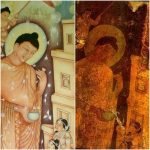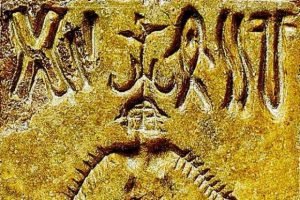Life is a beautiful thing. It manifests itself in different forms. From single-celled bacteria to insects, from fishes living in water to birds soaring the sky, from Mesozoic dinosaurs to lizards and snakes, from phytoplanktons to herbs, shrubs and trees, from neanderthals to all of us. Different philosophers and scientists have come up with their definition of life. The most widely accepted definition of living entities is, “Anything that can grow, reproduce, respond to the environment and have a metabolism is said to be alive”. Though there have been several models put forward by modern science about the origin and existence of life, but none of them is universal yet. Different sections of society have different perceptions, beliefs and theories around life.
In Jainism, all the core principles surround life. The followers believe every living entity has the right to live. Soul, the driver of life is considered to be the same amongst all individuals. Leave alone the differences of caste, color and creed; the soul of a prokaryote, the most primitive form of life is considered equivalent to the human beings the most complex of all the life forms. That is why the concept of ahimsa is the key virtue of ideologies of the religion.
To simplify the study of life forms, the system of classification has been considered a relatively modern concept. With Aristotle being considered the first to attempt, by classifying organisms in two categories: the ones which have blood and the ones which don’t have blood. Later Theophrastus continues his works to classify plants as well to become the father of botany. It was in the 18th century that Carl Linnaeus published his works: The system of Nature (Systema Naturae) that became universally accepted and utilized by the world today. But very few know that much before Aristotle, Jain Tirthankars in India had already conveyed the existence of 8.4 million species and also a classification system for these life forms. This system classifies organisms into five groups based on their senses. The ones with only one sense that is touch are referred to as ‘ek-indriye’. This section includes plants, bacteria etc. The second one includes those with two senses (touch and taste) called ‘dwi-indriye’ like termites, worms etc. The third one includes those with three senses (touch, taste and smell) called ‘tri-indriye’ like ants, lice, centipedes etc. The fourth one includes those with four senses (touch, taste, smell and sight) called ‘chatur-indriye’ like scorpions, beetles, flies etc. The fifth one includes those with five senses (touch, taste, smell, sight and hearing) called ‘panch-indriye’ like birds, fishes, cattle, humans etc. These ‘panch-indriye’ organisms are further classified into four classes: 1) naraki, the ones who live in hell, 2) tiryanch, which includes all the panchendriye living beings living on earth except humans, 3) Dev, the ones who live in heaven and 4) Manushya, we the human beings. Ekindriye, the ones who have just one sense of touch are also further classified into 5 classes: 1) prithvikaya: who have earthly bodies example clay, sand, corals etc 2) Jalakaya: who have water bodies example iceberg, rain, hot water springs etc 3) agnikaya: who have fire body example hot ash, flame etc 4) vayukaya: who have air bodies example normal air, wind, cyclone etc 5) Vanaspatikaya: who have plant bodies example herbs, shrubs, trees etc. These are a few main broader classifications of 5 groups based on sense organs. There are multiple sub-classifications to understand the nature, role and other characteristics of each organism.
Jain philosophies were amongst the very first to claim the presence of sub-microscopic living entities in soil, air, water and even fire. These claims left the early scientific community perplexed. Some people considered it to be surreal. That’s because the rational human mind is unable to accept what it can’t see or experience. Only after the advent of the first microscope and fantastic works of English scientist Robert Hooke and Dutch scientist Antonie van Leeuwenhoek, the world accepted the presence of microbes. Scientists were able to isolate bacteria from air, soil and water. But fire remained a topic of confusion. In 1960, scientists were able to discover life in hot springs. It was Thermus aquaticus, the bacteria that revolutionized the biotechnology world. The presence of hyper thermophiles, life forms that can survive the temperature above 80°C is also confirmed now. The highest temperature that a life form can survive is a bacteria that remains alive and can reproduce at even 121°C. These findings suggest a possible discovery of life forms in fire by scientists in near future.
Another concept is the existence of infinite individual living entities in human/animal body. This sounds bizarre and unrealistic. But if we ponder a little over certain facts proven by science, there are about 37 trillion (average) cells in a human body. Scientists have been able to isolate these individual entities called cells and keep them alive in laboratory conditions. Each of these cells are able to metabolize nutrients, reproduce, respond to external stimuli and fulfill each and every single criterion to come under the category of a living entity. So modern science is in a way on the journey to prove what has already been mentioned by the forefathers.
This in-depth knowledge about the life forms that existed ages ago, which modern day scientists are discovering now conveys us the richness of knowledge, tradition, and culture. Life forms are just one of the endless topic list that is covered here from the lens of a scientist. There are many other things like physical sciences: the nature and size of the cosmic world, existence of life other than earth, the theory of atoms, concepts of inertia and motion; humanities, behavioral science, wellbeing and spirituality.
















Add Comment